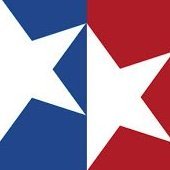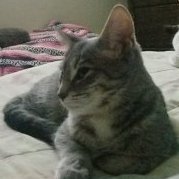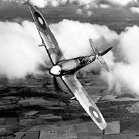Search the Community
Showing results for tags '1/72'.
-
Master Box 1/72 Mark I Male “Special Gaza Modification”, built out of the box. The kit was actually a pretty easy and enjoyable build, but is sadly let down by the awful rubber band tracks that simply refused to hold paint, nor respond to traditional adhesives. Thanks for looking.
-
Here is my recently completed MiG-15 that was built as part of the 'Baby Boomers' GB using the Eduard 1/72 kit and finished in the scheme of an a/c from 176th IAP, Antung Air Base, Korea, 1951. Build log here: Stuart
-
It's another ancient FROG kit for me this month as I recover from my marathon BPK Poseidon build ! But how to change a FROG Gloster Meteor F.4 into something naval? I know, shoot missiles at it and build it as a pilotless U.15 Radio Controlled Target Drone of 728B Naval Air Sqn at RNAS Hal Far in 1960, trialling the new Seaslug ship-borne anti aircraft missile! I know that there were some superb resin conversion kits available for this until recently, but there seem to be none left and I wanted to do was a very quick and simple (10 days from start to finish) scratch conversion to restore some modelling fun into my life. Strangely, its these very quick "looks like" projects that sometimes give me the most satisfaction. The wing camera pods and other protruberances were scratched up from sprue and drop tanks and are good enough for me. Painting that yellow and red was fun. An overall white coat, then two yellows, then two reds where appropriate. Humbrol and Revell enamels and my trusty hairy stick brush. masking was surprisingly difficult, and you can probably see, didn't go altogether to plan around some of those curves (actually it was th ened for a 2nd red coat that caused the problems). But hey, its another Naval Meteor to add to my shower!!!! And... my enthusiasm is back. The Shower - left to right: Matchbox as a TT.20, Airfix as a Sea Meteor F.III, FROG as a U.15 and Matchbox heavily modified to become a T.7
-
Another two-for-one with this post. These were both old Novo kits from around 1979 given to me by the same person who gave me the two Karas I posted earlier, with the same stipulation: build them, paint them and give one back. There were no problems with the fit of any of the pieces aside from the clear parts, and the decals were in surprisingly good condition. As per usual, I used AK Real Colors as the paint for both of them. This was the first time I've put invasion stripes on a plane, and I think the end result looks good, but I will make the black lines a bit thicker next time. I also should have put the stripes on the wings closer to the fuselage, but the underwing rocket launchers were a real pain to mask off, and I ended up cheating. ----------------------------------------------------------------------------------------------------------------------------------------------------------------------------------------------------------------------------------------- Here are a couple of Fairey Fireflys: a British-made carrier-borne fighter, sub destroyer and reconnaissance plane. One of these depicts a British Firefly in the Fleet Air Arm, sometime around the Overlord landings; the other was my attempt at replicating the RCAF version that the Canadian Warplane Heritage Museum currently has in its collection. The Firefly began production in 1940 with its first flight in 1941, and its official deployment starting in 1943. It used the Rolls-Royce Griffon engine (used also by later Spitfires, Seafires and Tempests), and the two versions I did are equipped with cannons and underwing rocket projectiles. Although used in every theatre (notably seeing some action off the coast of Norway against the German battleship Tirpitz), the Firefly was mainly used in the Pacific against Japanese targets. It was also the first British-made Allied plane to fly over Tokyo during the war. After the Second World War, the Firefly continued to be used by the Commonwealth nations, and was prolific during the Korean War.
- 10 replies
-
- 16
-

-
- 1/72
- Fairey Firefly
-
(and 1 more)
Tagged with:
-
Good day, Here is my second submission for the year. The highlights of the kit are as follows………… 1. Paints / colors used A. Airframe : AK Gunship Gray FS36118, Model Master Dk Ghost Gray FS36320, Lt Ghost Gray FS36375, Vallejo Med. Gray FS36270 B. Exhaust : AK Extreme Jet Exhaust, Titanium, AK Buff C. Interior : Life Color Dk Gull Gray, Mission Models Dk Gull Gray, Tamiya Flat Black XF-1 D. Landing gear and bays : Tamiya Flat White XF-2, Tamiya Gun Metal X-10, Mission Models Tire Black 2. Washes : Vallejo Black, Lt Rust, Lt Gray, AK Medium Gray, Tamiya black, brown 3. Kit decals used 4. Master nose metal pitot tube ( Angle of Attack / AOA probes lost during construction and awaiting shipment of new probes ) 5. Hasegawa GBU-10 bombs. 6. Eduard photo etched seat belts 7. Plumbers putty and lead fishing sinkers were used as ballast to have the Viper sit proper. Continuing with my Fiftieth Anniversary of the F-16`s first flight in January, 1974, I decided to add this somewhat unique Viper to the display cabinet. The Revell kit comes with very nice detail and construction was straightforward without any issues. I used the kit supplied ejection seats, decals, AIM-9 & 120 missiles, and external tanks. The decals went on very nice without any problems. The colorful tail markings all fit together nicely. I enjoyed putting this one together and I believe you will too. Recommended for those with a bit more than novice skill level due to many parts and significant amount of decals required. Thank you in advance. With much respect, Mike
-
Second build. Another spitfire completed. A few mistakes on my behalf but I am learning and most important enjoying myself.
-
Hi all Been working on this one, the kit goes together very well and quickly too. I built mine OOB and was enjoying up to a loss of mojo when I had trouble getting the panel line wash to stick , my fault, I should have deepened the panel lines with a blade or Olfa cutter first, thanks to Stuart @Courageous for pointing out something I used to do , use a brush to clean away the excess and it worked well. The model was brush painted with Humbrol enamels, the parts of the codes in the bkack stripe area under the wings were a different colour yellow so painted over them with Humbrol 24. I am pleased with the overall look of this one. Thanks to those that commented and liked, the support and encouragement given is very much appreciated. Thanks for looking in Chris
-
Hi guys! A short introduction. My name is Alexander. I live in Ukraine and English is not my native language. Fortunately, there are “crutches” - Google Translate. But still, I may be inaccurate regarding termenology and model slang. So, you can correct me and give clarifications, this will improve my knowledge of English. Unless, of course, this forum thread will be of interest to anyone at all. And so I will build a kit from Condor 72016, Mig-25. This is a very old set, this plastic was sold in “Eastern Express”, “zvezda”, “IomKit” boxes, you can see all this on https://www.scalemates.com/ru/kits/condor-72016-mig-25pd--137575 As well as review of what's inside the box, for example on youtube. This kit is no longer relevant today. I cannot recommend this set to anyone. It is not very accurate geometrically, very low quality and poor detail. And I didn't plan to buy this kit. I got it as a prize at a scale model exhibition that took place in Mariupol in the autumn of 2021. And I tried to sell it, exchange it, or even just give it away. But in the end I decided to build it. Despite the fact that my box says Mig-25PD, and even added some parts, this set corresponds to the Mig-25P (Миг-25П) version. P(П) literally means "Interceptor". This is interesting because no one else has released this version. If you want to build the “P” version, it is much easier to conversed it from the ICM set, even though the ICM also has many shortcomings. The Mig-25 “red 31” flown Belenko, hijacked to Japan, was from version P. This modification was exported only to Libya. And I absolutely do not want to build anything with red stars. For this reason, I will build a Libyan Air Force aircraft.
-
The new T 90 from Vespid is available, and although it is up to the usual Vespid standard and has some exquisite detail on it, there are a couple of oddities that someone messed up somewhere. The yellow marked item is the first oddity, this is the front lower glacis for a T 90A, the T 90 should be similar to the T 72, I have so far in all my references not found this style on a T90 here we hit the other oddities, the yellow item is the front entrenching blade for a T 90A, it has a different profile to the T 72/T 90 Blade. The blue item is the rear plate, the moulded on details are grouses for the later double pin tracks of a T 90A or late model T 72, further two track links of the later style track are to be added, instead of the Rmsh track supplied in the kit. The red items are a T 90A exhaust and not used in the kit, I am hoping that someone at Vespid has messed up and released the wrong sprue A? options for correcting the kit are limited, top row is what vespid supply, the second row is from the Zvezda T 90SM kit, that will fit with a small modification ( cutting the spare track from the rear plate and removing the top portion of the lower glacis). The two beige are from the Revell T 90 and T 72 respectively both can be made to fit. The other lower glacis is from the Zvezda T 72B3 will also fit. The lower glacis from the Revell T 90 won’t fit without a lot of work. Or you could cut the details from the Vespid kit and use the blade from the Zvezda MSTA and a couple of spare track links. Also shown are the wheels with the two tiny alignment points that require care and diligence to get right numbering error in the instructions, also I would make it the other way round, although the arms are keyed they are a little loose fitting, the arms attached to the shock absorbers (B15+A11,12,13etc) are more precise in placement and the other arms can be adjusted to match, also these parts (B4) although keyed have a 45 degree range of movement but should all face the same direction and towards the arm (seeing as how they are the bump stops for them) The next part of the instructions are to add the wheels and then the hull top, this seems awkward for adding the tracks later and it is quite alright to leave them separate until the end, the wheel axles are really thin and won’t take much manhandling. So for this part I made the glacis and hull top seperate A nice fiddling piece is the PE round the commander’s cupola, I struggled with this on a 1/35 kit, surprisingly it wasn’t as hard as anticipated this is it just placed together so far you really need to let the glue dry on the wheels, it is not the strongest of bonds but should be ok when the tracks are attached. almost forgot the 3D printed shtora emitters and head lights and the fuel lines for the rear drums and gun shroud, most of these are also in plastic with the exception of the canvas for the gun, the plastic parts are for a gun without the canvas fitted.
-
I’m just starting this from the stash. 2 queries. 1. The overall colour will be Gunship Gray. It’s as close a match as I can see from various photos on the net and seems oft recommended on here for modern French a/c tho not, so far as I can see, the Alpha Jet. (I had assumed Mirage blue was correct until I saw the photos). Does anyone have any strong evidence against Gunship Gray? 2. I assume the -E was unarmed for most of its service life. It’s even hard to find pictures of it with fuel tanks. Further,the gun pod in the kit seems to be the Mauser rather than the DEFRA . Again, have I got this wrong or were they often carrying ordnance? TIA
-
Here all. Here is my recently completed build of a Savoia-Marchetti S.55 Torpedo Bomber of the Regia Aeronautica Italiana using the Dora Wings kit in 1/72 and was built as part of the World War 2 Twins GB. Built out of the box with only a figure and rigging added and mounted on a sea base. Build log here: This thing is big for me, taking the space of 4-6 of my 'normal' sized subjects... Stuart
-
Although the Special Hobby kit is a better option, the Sword F84F is quite buildable. I 3D printed a correct ejection seat as the kit only includes the early seat. The incorrect wheels were replaced with some new ones I designed and printed as well. The build saga is here.
-
A two-for-one with this post. I was given two of the same Heller kits (from 1993) and told I could have them for free if I returned one in its completed state. As with any Heller kit I've made, there was no issue in part fitting and the only (minor) issue was that the decals had to soak for a little longer than usual. The Polish version is painted in Vallejo's Model Air line (a brand of paints I've had almost exclusively bad results with) in German Braunviolet, and the Romanian in AK's Real Colors' Grau (1941). I haven't been able to find any colour photos of the olive drab that Poland painted their planes in, but I've read that it was very similar to the Luftwaffe's Braunviolet (which on its own is hard to track down a match for). This is also my first attempt at making a staging setup for my photos. At the time of this photo, it was a work-in-progress, and it remains so. ----------------------------------------------------------------------------------------------------------------------------------------------------------------------------------------------------------------------------------------- The Polish PZL.23 Karaś, (translated as the Crucian Carp) was a light bomber and reconnaissance plane. Another two-for-one post, this time one is done in the Polish paint scheme and decals (drab) and the other in those of the Royal Romanian Air Force (olive and yellow). The Karaś was produced after the Polish-Soviet war of 1919-21 after the importance of aerial reconnaissance became evident. A new light bomber was also required, so PZL combined the two roles into the Karaś. At the time of its production, it was quite advanced, but the 1930s saw rapid improvements in aviation, so it was nearly considered obsolete by 1939 and the outbreak of the Second World War. At the time of Germany's invasion of Poland, the Karaś was Poland's primary light bomber and recon craft. It was a single Karaś that conducted the first bombing raid on a German factory on September 2nd, and columns of Karaś bombers were responsible for taking out nearly 30% of invading land vehicles. Unfortunately, they had minimal fighter support and their light armour ensured that they suffered heavy losses. After Poland's capitulation, many of the remaining Karaś craft were shipped to Romania to use against the Soviet Union in Operation Barbarossa.
- 16 replies
-
- 35
-

-
- PZL.23 Karaś
- 1/72
-
(and 1 more)
Tagged with:
-
My first kit in over 50 years. Thoroughly enjoyed it. Made some mistakes but all part of the fun! For a starter kit I was impressed by the quality of the fit.
- 10 replies
-
- 33
-

-

-
Well, the weather here has been up and down like a toilet seat, with 2 inches of snow a couple weeks ago, sunny and 17C yesterday, then torrential rain and 10C for the next couple days. Net result, ….. modelling season has been extended!! To take advantage of this unexpected extension (and corresponding delay in my softball/golf season), I picked up this Master Box 1/72 Mark I and decided to build it out of the box. The fit was pretty good, the rubber band tracks are a bit poorly moulded in spots, and the instructions are positionally a bit vague, especially given the lack of any locating pins, but all in all, a fairly enjoyable build so far. Here’s where I am after paint. Not being that familiar with WWI subjects, I’m a bit suspicious of the accuracy of the paint call outs, but I followed them and the box art religiously. Lots of weathering left to do, and I suspect painting, weathering, and installing the tracks may be problematic. Hopefully completed within the next week or two. Thanks for looking.
-
Nice kit, new mould from 2016 I believe, went together really nicely, a very enjoyable build, painted with Xtracolor enamels.
- 14 replies
-
- 46
-

-
When Italy joined NATO in 1949 she was still flying sleek and shiny Spitfires. As part of my "Spitfires-by-the-Seas" project, in which I am building a pair of Spitfires in the markings of countries bordering five seas, I will build an Italian Mk IXc as part of my "Ionian Sea" pair for this GB.
-
Hello Britmodellers, Here's my take on the Airfix MiG 17. I wanted to build a slightly different machine than the famous '3020' so I did some decal juggling there. A few grainy pics show '3012' in a heavily weathered condition. It took me two tries before I ̶g̶o̶t̶ ̶f̶e̶d̶ ̶u̶p̶ ̶w̶i̶t̶h̶ ̶i̶t̶ / got the effect somewhat acceptable. Other modifications were the KK-2 bangseat, reshaped inner wing leading edges and brass gun barrels. Thanks for watching! Luka
- 11 replies
-
- 42
-

-
I dug through the stash and found the Williams Bros Boeing 247 kit. I am not a fan of either scheme in the kit, the racer or flight test article. I will see if I can find some other decal options on the net.
-
With Eduard's newest 1/72 109F releases, a question has resurfaced for me once more regarding the tall pilot's seat. I've only seen this covered by Aires years ago with their 1/32 set, but no real explanation as to when it was used. Fine Molds includes a tall seat in some of their 109 kits, but I do not recall anything in the instructions regarding the using of it. Seems that most 109F and later kits all use the 109G type pilot's seat. I'm looking for information on this tall seat. Which 109Fs was it used in? the early Fs (F-1, F-2)? or was it also found in the later F-4? and if so, was there a serial number "cut off" where it had been stopped being used? Would any of Marseille's 109Fs used the tall seat? Thanks to all in advance for any input.
- 4 replies
-
- 1/72
- Messerschmitt Bf.109F
-
(and 1 more)
Tagged with:
-
Hi all, Here is my Tamiya 1/72 Thunderbolt Razorback, a kit that requires little introduction I guess: great fit, with lovely detail all around. I just added a few details (PE seat belts in the cockpit, brake lines on the main landing gear, vacform canopy, brass gun barrels and DF loop antenna on the spine). The drop tank is from a Pavla armament set. The model represents an aircraft from the 1st ACG, that provided close air support and resupply operations to British troops (the so-called "Chindits") that were dropped behind Japanese front lines in Burma. For this "Operation Thursday" aircraft, I used the DP Casper decal sheet. The sheet provides fuselage stripes and theater bands in both dark blue and black. Reading through Squadron's "Thunderbolt in the Pacific Theater", the fuselage stripes are described as dark blue and the bands on wings and tail surfaces in black, so I settled for this combination. First time I used DP Casper's decals: these are very thin and break easily, so care is needed in handling them but they give a nice result. For the NMF I used a few Alclad shades, other paints are mostly Tamiya acrylics. Weathering was done with oils and pigments. Here is a Wikemedia picture of the real thing: United States Army Air Forces, Public domain, via Wikimedia Commons Credits background picture: freepik, https://www.freepik.com/free-photo/beautiful-scenery-green-tree-forest-cloudy-sky_9185373.htm Hope you enjoy the pictures, thanks for looking! Best regards, Patrick
- 20 replies
-
- 62
-

-

-
This is my initial entry to the GB. It is well on its way and has been languishing on the Shelf of Doom for some time. I started it almost 2 years ago and was last touched in September 2022. My aim is to finish it this time around, I have until 17 Jun to complete it as I will be away in Europe when the GB finishes. It will be finished as 140111 as it appeared at a Fincastle competition. I started with this. Made a started the CP-140 mods to the kit and did the cockpit I have completed most of the assembly and am using an Eduard etch set for the wheel wells and exterior It now is at this stage, now to find the rest of the etch set and parts to finish it off!
-
Hi. Bit of a late entry here, but I think there's still time. I've been mulling this over for a few days because, depending upon one's world view, it is either very ambitious (for me) or totally stupid. Guess which the wife thinks it is ....... I was gifted 2 of the Brengun kits a while back but at that time I'd never heard of them, being mostly familiar with the "bigger" kit names and they've been in the stash for a while. But the time has come ..... So we start from here There is a resin intake included, which looks an improvemnet on the plastic version. The decals look a bit bright to me, but no matter. The kit offers these schemes shown for completeness, but I will be doing a different finish - if we get that far. I've also been doing a bit of reading around BM and t'interweb. It appears that there are no current 1:72nd scale P-51a/Mk1 Allison engined kits which truly reflect the “emaciated” fuselage lines displayed when compared with the later Merlin versions. [Having said that, one will probably emerge now! ] The consensus seems to be that most kits are too deep in the fuselage and don’t reflect the 3” lower vertical distance between wing and cockpit sill than the Merlin engine variants. There’s also the wing root leading edge droop on the earlier versions (pre 51C) that is not represented often either. Britmodeller discussions are several on this. For my purposes the best collated notes are the builds by @opus999 - link here https://www.britmodeller.com/forums/index.php?/topic/235088418-when-adequate-has-to-be-good-enough-condor-172-a-36/ I'm not doing a kit review, merely establishing a starting point, but a specific comment about the Brengun kit was "The Brengun kit was a no-go for me, as the sprue shots I've seen appeared to have an AZ P-51B fuselage smoothed into an Allison-esque shape at the front rather than being shallower along the full length of the fuselage. " That's encouraging ..... So we have a challenge - but that's the fun of this hobby I think. Keeps the old mind working, discovering new things, and hopefully extending skills. OK, we have to do a bit of work. Whilst some kits appear better than others, they'll all need something doing to get a better "look" to the model, and I have what I have. Now, I'm not an absolute stickler for detail. My skills and patience will not allow me to create a totally accurate replica and I'm prepared to compromise. I'm happy if the overall "look" is ok but having said that, I like to know what it "should" be like so that I can adopt a standard of "informed inaccuracy" **. So if I do perpetrate an error or need to extend my knowledge, then please do shout up and we can talk it through. [** - I think this came up in a discussion with ME @ModelingEdmontonian, but I could be wrong] The fuselage depth thing seems to me the most challenging. BUT 3" is only a shade over 1mm in 72nd scale, so is it worth it? I think so, yes Thinking about this and looking at all the info in the threads and photos around, it might be possible to take out a sliver on the kit along the line from the spinner to the beginning of the rear fuselage after the upcurve from the intake. Then · fill and sand/file the nose profile · fill and sand the rear upslope from the intake · flatten the panel in the side walls in the region of the exhausts · re-scribe panels and access hole flap/covers Taking it further, for the wing inboard leading edge · backfill the root region to allow sanding · sand as per Opus999 to create marked “droop” on upper surface Would also want to check · spinner profile and fit with “new” nose · undercarriage and doors · guns · prop · radio mast Other things to consider · wheels · cockpit interior, IP etc · exhausts So, "Simples" as a well known Meerkat is wont to say (Sorry that's a UK advertising reference). Thanks for looking. I've outlined what for me is a complicated kit-bash plan but hope you will stay along for the entertainment. The next instalment will look at the intended subject aircraft as well as marking out where the cuts need to be for the plastic surgery cheers Rob
- 36 replies
-
- 10
-

-
Another more recent completion of an old kit--this Airfix kit was from 1970 and I finished it in July of 2023. This may be the oldest kit I've built and there were no issues in the build quality. Unfortunately, one small piece was missing from the bag it came in (see if you can tell which one). I painted this in the pre-war Splittertarnmuster scheme using AK Real Colors' line (RLMs 61, 62 and 63 with 65 (1938) underside) The lines came out extremely smooth and better than I expected. No issues with the decals either, though this kit did not contain any swastikas for the tail. I don't have a place near me that sells these either (and shipping to Canada for anything is outrageously expensive), so I've left the space empty right now. Maybe one day I'll pick up a sheet of swastikas (there's a fun sentence) and throw a nice red banner on the tail. ----------------------------------------------------------------------------------------------------------------------------------------------------------------------------------------------------------------------------------------- he Hs 123, designed by the transportation company Henschel, was a German dive bomber and close air support biplane, used during the Spanish Civil War and much of the Second World War. Though originally intended as a dive bomber, the Hs 123 was overtaken quite early in this role by the Junkers Ju-87 Stuka, the latter having much better range, and larger bomb capacity. Due to this, the Hs 123 was transitioned into a close air support role, where it did quite well. Production was short-lived however in favour of the Stuka. The Hs 123 was used during the initial invasion of Poland where it could drop bombs very accurately, and the sound of its engine was apparently quite terrifying to hear (if the threat of being bombed wasn't enough, I suppose). It was considered a very effective aircraft and would be used by the Luftwaffe during the Blitzkrieg and later on the Eastern Front. Apparently Colonel-General Wolfram von Richthofen requested they be put back into production as late as 1943 due to their reliability in poor weather conditions which could ground more advanced aircraft.




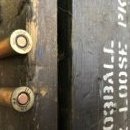

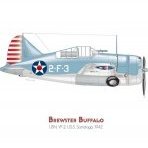



.thumb.jpg.2c282efcc138b7cf7f1e1586a9c534d2.jpg)
